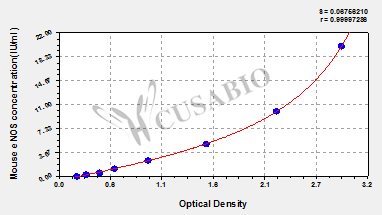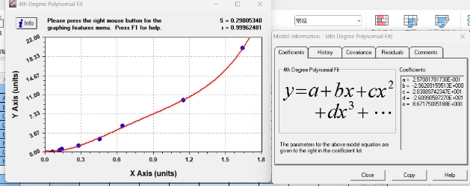This mouse eNOS ELISA kit employs the quantitative sandwich enzyme immunoassay technique to measure the levels of mouse eNOS in multiple samples, including serum, plasma, and tissue homogenates. It also uses the enzyme-substrate chromogenic reaction to visualize and analyze the analyte levels through the color intensity. The intensity of the colored product is in direct proportion to the eNOS levels in the sample and is measured at 450 nm through a microplate reader.
eNOS, also called NOS3, is usually constitutively expressed in cells in an inactive state and is activated by binding to the CaM protein after the elevation of Ca2+ concentration. NOS3 is highly enriched in endothelial cells (ECs) and contributes to the generation of nitric oxide (NO) to exert vasodilation and regulate the flow of blood throughout the body. It is linked to cardiovascular diseases such as hypertension, atherosclerosis, and diabetes mellitus. Recent studies have shown that NOS3 plays an important role in cancers, such as inhibiting apoptosis and promoting angiogenesis, proliferation, invasiveness, and immunosuppression.







